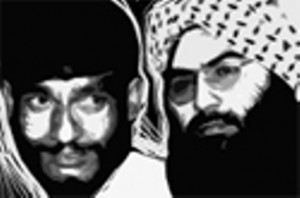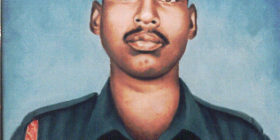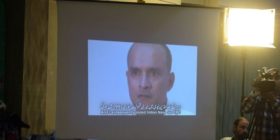I will raise 500,000 mujahids to liberate Kashmir…” – Masood Azhar
Founder of Jaish-e-Muhammad, Masood Azhar became a legend after he came back to Pakistan. One of my close relatives, who later headed an intelligence agency, was thrilled over the hijacking of Indian Airliner IC 814 in 1999, not knowing that the people who were released would one day turn against Pakistan. The Frankenstein that Pakistan thus created, had turned into a Godzilla which to this day remains uncontrollable.
The men who hijacked the Indian Airliner – Ibrahim Azhar (brother of Masood Azhar), Shahid Akhtar, Sunny Qazi, Mistri Zahoor Ibrahim (all belonging to Jamaat-e-Islami) along with Shakir Ahmed and Shoaib Khan, negotiated the release of three militants – Omar Saeed Sheikh (who later beheaded Wall Street Journal journalist Daniel Pearl along with al-Qaeda’s number three, Khaled Sheikh Muhammad), Masood Azhar (responsible for the 2001 attack on the Indian Parliament) and Mushtaq Zargar (who trains the next breed of “non-state actors”).
Pakistan’s love for Masood Azhar, like many of its affairs, ended up in a quiet divorce. If one asks an intelligence official dealing with jihadis, he wouldn’t remember Azhar due to a policy change in 2004.
Initially, four out of every five jihadis from Punjab fought in Afghanistan. They mostly belonged to the Gujranwala, Burewala, Ludan, Sahiwal, Bahawalpur, Rahimyar Khan and Faisalabad regions. A big debate was raging within the jihadi groups as to what name the new jihadi movement to liberate Kashmir from India should have. Due to influences from Maulana Haq Nawaz Jahngvi, Azam Tariq and affiliations with Sipah-e-Sahaba – a militant sectarian organisation, it was decided to name the organisation Sipah-e-Muhammad. The name was voted for by the “handlers” and intelligence agencies after which Jaish-e-Muhammad was formed.
In Karachi however, Maulana Masood Azhar’s promise to get 5,00,000 militants to liberate Kashmir came at a cost. Harkat-ul-Mujahideen (HuM) and its biggest ally, Lashkar-e-Taiba felt the heat when their legitimacy came under threat. Pakistani intelligence agencies put their weight behind Jaish-e-Muhammad because of two reasons: HuM was too fanatical and had Arab connections , and Lashkar-e-Taiba was enlisted in the state department’s terrorist list. Things also got out of hand when Maulana Masood Azhar pitched in Muqalids (who follow four imams) versus Ghair Muqalids. Later, Masood Azhar isolated himself from the HuM and LeT by allying himself with the Sipah-e-Sahaba chief, thereby leaving the Ahl-e-Hadith LeT and other jihadi outfits. Earlier in Karachi’s Banuri town, Mufti Nizamuddin Shamzai, Dr Sher Ali Shah and Mufti Rasheed Ahmed (of Zarbe Momin fame) mediated between Harkat-e-Mujahideen and Jaish-e-Muhammad, and it was decided to split finances and offices where four-fifth of the Punjabi militants supported Jaish because of its Punjab and Sipah-e-Sahaba affiliation against Harkat’s Fazlur Rehman Khalil.
With Maulana Yousaf Ludhanvi and Mufi Nizamuddin Shamzai supporting Jaish-e-Muhammad and Masood Azhar against Harkat-ul-Mujahideen; Fazlur Rehman resorted to al-Qaeda’s Osama Bin Laden whose fatwa against killing Americans was signed by Fazlur Rehman in 1998 in Afghanistan. Osama Bin Laden sided with Harkat-ul-Mujahdeen possibly to raise his profile among the Pakistani jihadi movement and sent millions of dollars along with new SUVs to Harkat-ul-Mujahideen. He sent a strong message to Jaish-e-Muhummad by ordering the assassination of Maulana Yousaf Ludhanvi in Karachi. The message was clear, “stay away from Harkat…”
Post 9/11, Jaish-e-Muhammad split from its hardcore militants who had fought in Afghanistan and were close to al-Qaeda, and those in the organisation not in the Pakistani intelligence agency’s control and decided to launch attacks on Americans, sectarian groups and use suicide bombing as a tool. Maulana Abdul Jabbar, a central force within Jaish-e-Muhammad led the group who formed an organisation within the organisation. It attacked American installations apart from accusing Maulana Masood Azhar as an ISI tout and a corrupt person. The division was clear – Masood Azhar’s faction within JeM received official patronage and immunity with Land Cruisers and Range Rovers, while Jabbar’s Group within JeM was declared ‘rouge’ by intelligence agencies. One of the main accusations on Maulana Masood Azhar within JeM and from other jihadi movement in Pakistan was his silence on General Musharraf’s U-turn post 9/11 against Taliban. Masood Azhar would not say a thing. Infact, so open was Azhar’s patronage by the government of Pakistan that when he came to Karachi, despite the Home Minister of Sindh’s refusal to let him enter, Brigadier (retired) Zamin personally came to Masood Azhar’s rescue at the Jinnah Terminal in Karachi.
However the romance between Pakistan and Jaish-e-Muhammad ended in December 2003 with the attack on General Musharraf by Jaish-e-Muahmmad members and more importantly, when Washington gave out evidence to ISI on Masood Azhar providing logistical support and safe havens to al-Qaeda members in Faisalabad. Later, it was through Azhar’s organisational support that ISI arrested the second tier leadership of al-Qaeda hiding in Faisalabad and other parts of Punjab. In 2004, Pakistan’s changed its policy towards India and post-9/11, the world forced Pakistan to put a tab on all groups and Masood Azhar remains one of them.
In Karachi, Jaish-e-Muhammad’s Amir Maulana Masood Azhar has economic interests where he has four madarsas operating in different parts of the city apart from a cattle farm worth millions. Maulana Masood Azhar still has his Range Rovers and Land Crusiers, but there’s no work for him in today’s Pakistan while most of his workers and jihadists have turned against the state and are called Punjabi Talibans.






Leave a reply